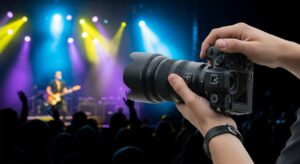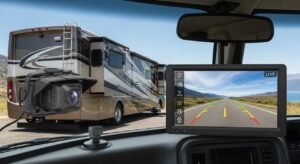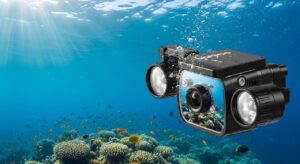Best Mic for Podcast – Ultimate Guide
Welcome, aspiring podcaster! You’ve got compelling stories, expert insights, or captivating conversations to share. But to truly connect with your audience, crystal-clear audio isn’t just a luxury – it’s a necessity. The difference between an amateur production and a professional podcast often boils down to one crucial piece of equipment: the microphone. If you’re searching for the best mic for podcast, you’ve come to the right place. This guide will walk you through everything you need to know to choose the perfect microphone that elevates your podcast audio quality and helps you stand out.
Why Your Podcast Needs a Great Microphone
Imagine listening to a podcast where the host sounds distant, muffled, or is plagued by distracting background noise. You’d likely tune out quickly, right? Poor audio quality is a major turn-off for listeners and can severely impact your audience retention. A high-quality microphone ensures your voice is crisp, clear, and engaging, making your content more enjoyable and professional. It’s an investment in your show’s future, ensuring your message is heard exactly as you intend.
“Good audio is invisible, bad audio is unlistenable.” – Every successful podcaster ever.
Understanding Microphone Types: USB vs. XLR Podcast Mic
One of the first decisions you’ll face when looking for the best podcast microphone is whether to go with a USB or an XLR connection. Both have distinct advantages depending on your needs and technical comfort level.
USB Microphones
USB microphones are celebrated for their simplicity. They plug directly into your computer’s USB port, making setup incredibly straightforward – often just plug-and-play. This makes them an excellent choice for beginners, solo podcasters, or anyone looking for a portable recording solution. While traditionally seen as entry-level, many modern USB mics offer impressive podcast audio quality.
1. Rode NT-USB+ USB Condenser Microphone
A professional USB microphone delivering studio-quality sound with incredible ease of use for a wide range of applications.

Key Features:
- USB-C Connectivity: Plug-and-play compatibility with computers, tablets, and smartphones.
- Studio-Grade Condenser Capsule: Delivers rich, full-bodied sound with excellent detail.
- Revolution Preamp: Ultra-low-noise, high-gain preamp for optimal sound.
- Built-in DSP: Advanced digital signal processing via RØDE Connect and RØDE Central software.
- Zero-Latency Headphone Output: Direct monitoring with volume and mix controls.
2. Blue Yeti USB Microphone, Silver
An iconic and versatile USB condenser microphone known for delivering clear, broadcast-quality sound with plug-and-play simplicity.

Key Features:
- Multiple polar patterns (Cardioid, Bidirectional, Omnidirectional, Stereo) for versatile recording.
- Plug-and-play USB connectivity for Mac and PC.
- Onboard controls for headphone volume, pattern selection, instant mute, and mic gain.
- Blue VO!CE software for enhanced broadcast vocal effects.
- Durable metal build with an adjustable desktop stand included.
3. Elgato Wave:3 USB Condenser Microphone, Black
A premium USB condenser microphone and digital mixing solution designed for streamers and podcasters, fusing convenience with broadcast-grade audio.

Key Features:
- Premium condenser capsule with tight cardioid polar pattern.
- Proprietary Clipguard technology to prevent audio distortion.
- Wave Link app for multi-source digital mixing and two independent output mixes.
- 24-bit/96kHz analog to digital conversion for broadcast-grade detail.
- Capacitive mute button and tactile control dial.
XLR Microphones
XLR microphones are the standard in professional audio environments. They offer superior flexibility, durability, and often better sound quality, especially when paired with a good audio interface for podcasting or a podcast mixer setup. While they require additional equipment like an audio interface or mixer to connect to your computer, they provide more control over your sound, including the use of microphone preamps. This setup is ideal for those seeking a professional podcast mic and ultimate scalability for their podcast studio equipment.
4. Shure MV7+ Podcast Microphone, Black
A dynamic hybrid USB-C and XLR microphone built for discerning podcasters, streamers, and musicians, offering powerful DSP features and customizable LED.

Key Features:
- Hybrid USB-C and XLR outputs for versatile connectivity.
- Customizable LED touch panel for instant mute and personalized style.
- Voice Isolation Technology to focus on speech and reject background noise.
- Powerful DSP features: Auto Level Mode, digital pop filter, real-time Denoiser, reverb effects.
- Control via ShurePlus MOTIV Mix app for desktop and mobile.
5. Audio-Technica ATR2100x-USB Cardioid Dynamic USB/XLR Microphone
A versatile and affordable handheld dynamic microphone with both USB-C and XLR outputs, ideal for high-quality voice recording and content creation.

Key Features:
- Hybrid USB-C and XLR outputs for digital and analog recording.
- Handheld dynamic design with a cardioid polar pattern for focused sound capture.
- Built-in headphone jack with volume control for direct, real-time monitoring.
- High-quality A/D converter (24-bit, up to 192 kHz sampling rate).
- Includes a desk stand, USB-C to USB-C cable, USB-C to USB-A cable, and XLR cable.
Key Factors When Choosing Your Podcast Mic
Beyond connectivity, several other technical specifications and features will influence your decision on the best mic for podcast.
Dynamic vs. Condenser Microphones
- Dynamic Microphones: These are robust, durable, and excel at rejecting background noise. They are less sensitive, making them ideal for untreated rooms or environments where you can’t control ambient sound. Many professional broadcast studios use a dynamic microphone for podcast due to their ability to capture direct vocals clearly while minimizing room echo.
- Condenser Microphones: Known for their sensitivity and ability to capture a wide frequency range, condenser mics produce a very detailed and ‘airy’ sound. They are fantastic for capturing nuances in your voice and are often preferred in acoustically treated spaces. If you’re looking for pristine recording vocals for podcast in a quiet environment, a condenser microphone for podcast might be your choice.
Polar Patterns
A microphone’s polar pattern describes how it picks up sound from different directions.
- Cardioid: Picks up sound primarily from the front, rejecting sound from the sides and rear. Ideal for solo podcasters to focus on their voice and minimize room noise.
- Omnidirectional: Picks up sound equally from all directions. Useful for recording group discussions around a single mic.
- Bidirectional (Figure-8): Picks up sound from the front and rear, rejecting sound from the sides. Great for two-person interviews facing each other.
- Stereo: Uses two capsules to capture a wide, realistic sound image. Less common for pure speech but great for ambient sounds or music.
Budget and Professional Needs
Your budget will naturally play a role, but remember that a good microphone is an investment. You can find an excellent budget podcast microphone that delivers fantastic quality without breaking the bank. On the other hand, if you’re aiming for a fully-fledged podcast studio equipment setup, investing in a professional podcast mic and accompanying gear like an audio interface for podcasting or a podcast mixer setup will provide unparalleled control and sound fidelity. Don’t forget to check out podcast microphone reviews for real-world insights.
Essential Accessories
No matter which microphone you choose, a few accessories are crucial for optimal podcast recording setup:
- Pop Filter: Essential for preventing harsh “p” and “b” sounds (plosives) that can distort your audio. A pop filter for microphone is a must-have.
- Shock Mount: Isolates your microphone from vibrations, preventing thumps and bumps from your desk or stand from being picked up. A shock mount for mic is highly recommended.
- Microphone Stand: Whether a desk stand or a boom arm, a stable stand positions your mic correctly.
- Headphones: For monitoring your audio in real-time and catching any issues during recording.
Tips for Your Podcast Recording Setup
Once you have your best mic for podcast, optimize your recording environment.
- Acoustics: Record in a quiet room with minimal echoes. Soft furnishings, rugs, and even blankets can help absorb sound.
- Mic Placement: Position the microphone about 6-12 inches from your mouth, slightly off-axis to avoid direct breath.
- Gain Staging: Set your microphone’s gain (input level) correctly. Too low, and your audio will be quiet; too high, and it will distort. Aim for levels that peak around -6dB to -12dB.
Conclusion: Your Voice, Amplified
Choosing the best mic for podcast is a pivotal step in your podcasting journey. By understanding the different types, features, and your specific needs, you can make an informed decision that significantly enhances your podcast audio quality. Whether you opt for a convenient USB mic or a versatile XLR setup, the right microphone will ensure your message resonates clearly with your audience. Invest wisely, set up correctly, and prepare to captivate your listeners with truly professional sound. Happy podcasting!

With a degree in Electrical Engineering and years of hands-on experience in the tech industry, passionate to provide readers with insightful reviews. From smartphones and laptops to smart home devices and emerging technologies, he navigates the ever-evolving tech landscape, offering in-depth analyses and honest opinions.






